Fig 1 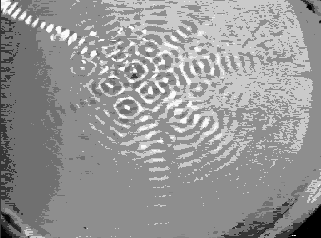
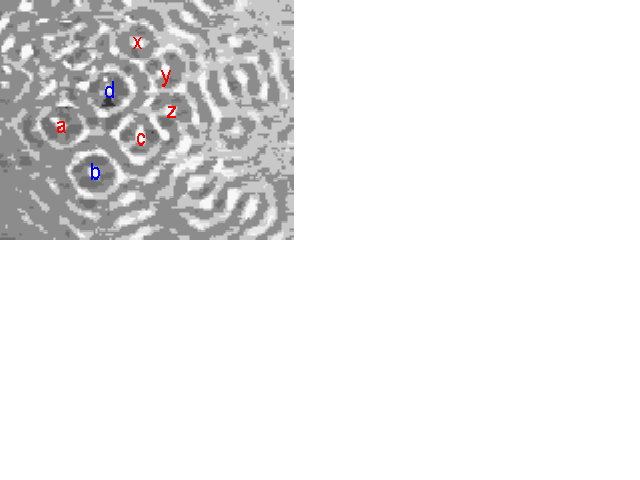 Fig 2
Fig 2
Recently there have been reports of interesting wave structures which appear in vibrated trays of small balls or grains of sand. These have been named "Oscillons" and take on a life of there own once they form. They have been observed to attract each other and to form strings and various crystal like structures, either square or hexagonal.
In these discussions I have seen no mention of the work of Hans Jenny who has published under the title "Cymatics" interesting photographs of similar structures that appear in liquids when vibrated rapidly.
On February 17th 1997 my brother Dennis and I made some experiments to see if we could repeat either of these oscillon or cymatics types of waves. We used a normal speaker connected to a computer and turned so that the speaker faced upwards. On top of this we mounted a small dish into which we put shallow water. Then we simply played various frequencies at different volumes to see what happened. We also experimented with different waveforms by adding harmonics.
We had no success with sand in the dish (probably because the speaker didn't have enough power) and it had a nasty tendency to all pile up and climb over the side. However water worked well and we found that at frequencies around 250 to 400 Hz we had interesting formations appear in the centre of the surface of the water. At slightly lower frequencies the activity was around the edges. At about 50 Hz the entire surface was active.
When the sound volume was low simple concentric rings appeared in the circular dish of diameter 6.3 cm. As the volume was raised gradually the central rings became energetic and generally formed a pattern like a flower with petals and then became free from a fixed location. At this intermediate level it was as if a number of "particles" had formed and a phase transition had occurred from solid to liquid. The particles were free to move but maintained certain distances from each other. At still higher volumes the particles travelled about very rapidly and sometimes small jets of water were ejected vertically.
Fig 1 
 Fig 2
Fig 2
Picture of waves formed with 280 Hz vertical oscillation in a 6.3 cm circular dish. The particle like waves travel about independently when a medium strength oscillation is applied. The right figure is an expansion of the left and the particles at a, b, c, d have distances of 3/2 waves apart while x, y, z are only 2/2 apart. Therefore b and d are 180 degrees out of phase with the other particles labelled. So there are different "bond lengths" present. This is very suggestive that atomic particles are similarly formed as standing waves. Some non-linearity is necessary to have stability. In this case it is supplied by the different rate of acceleration applied to the water from above (by gravity) and below (by pressure). Surface tension applies in both directions.
A study of the distances between the labelled particles will give insights into how galaxy and stellar distances can be quantised. The distances are clearly quantised and also depend on the phase of the particles. The left diagram below shows how plane waves can agree in phase with multiple particles and this applies in multiple different directions. In 3D it is even more interesting. The right diagram shows the relationships between phase and distance and makes clear how each particle/wave supports each other one. These are exactly the types of structures that I had expected from the harmonics theory and I believe apply to galaxies and stars, atoms and particles.
Fig 3 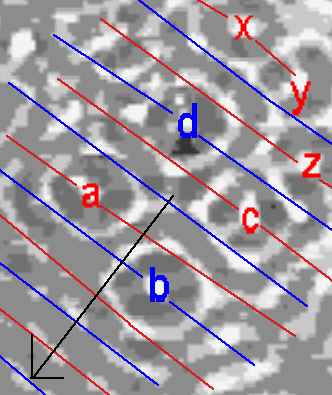
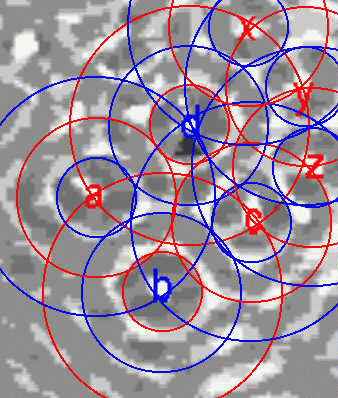 Fig 4
Fig 4
The apparatus itself (fig 5) and a typical hexagonal wave structure (fig 6).
Fig 5 
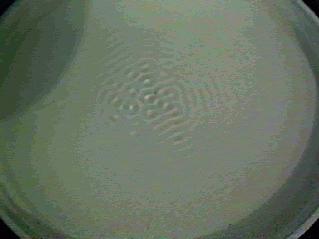 Fig 6
Fig 6
AVI video simliar to above image, showing "particles" (600 kb)
AVI video of 4 spoked formation that flip-flops and looked like 8 spokes (280 kb)
Unfortunately the quality of the video sequences does not do full justice to the phenomenon, but the first one certainly gives an impression of particle/waves.
Physical Acoustics, Sonoluminescence, Sonofusion
Russ George's pages
size VERY large
Pressure Zone Theory
The Pressure Zone Theory (PZT) by Jerry W. Decker Vangard Sciences.
John Worrell Keely used vibrating waveplates in his compound vibrational
research.... link
- size 19K - 8 Jul 96
ER News - September/October 1996
New Phenomenon Discovered in Colliding Spheres. by Kristin Manke, Pacific
Northwest National Laboratory. From sand on a beach to grain moving through...
link
- size 4K - 31 Oct 96 [this link may be faulty]
PHYSICS NEWS UPDATE Number 286 September 13, 1996 by Phillip F. Schewe
and Be
PHYSICS NEWS UPDATE. The American Institute of Physics Bulletin of
Physics News. Number 286 September 13, 1996 by Phillip F. Schewe and Ben
Stein.... link
- size 4K - 18 Sep 96
References on dry granular media by lui
References relating to granular media. Contents: All Letters (Quick
Access), Search, Introduction, BibTeX files, Date and Statistics, Ordered
List,... link
- size 263K - 18 Nov 96
Umbanhowar's Home Page
Paul's Home Page. Pattern Formation in Granular Materials (pictures
and papers) For a short synopsis of our work on granular materials see:...
link
- size 2K - 20 Oct 96ER News - September/October 1996
New Phenomenon Discovered in Colliding Spheres. by Kristin Manke, Pacific
Northwest National Laboratory.
From sand on a beach to grain moving through... link
- size 4K - 31 Oct 96
Scientific American: Science and the Citizen
PHYSICS. SCIENCE WITH BRASS. Unusual movements from tiny metal balls.
Credit: Paul Umbanhowar. OSCILLONS do not yet explain consciousness but
are spurring. link
- size 5K - 13 Nov 96
Aging, disease and electrical phenomena in RNA and DNA
Aging and Disease and electrical phenomena in DNA and RNA. DNA is composed
of simple chemicals strung together like beads which form molecules known
as... link
- size 30K - 15 Jul 96
SISSA Condensed Matter Abstracts 3/95
Paper: cond-mat/9503001 From: Ludvik Smrcka Date: Wed, 1 Mar 1995 11:49:50
+0100 Title: Single layer/bilayer transition of electron.. link
- size 214K - 5 Dec 96
Center for Nonlinear Dynamics - AccessWatch Summary
Accesses for Center for Nonlinear Dynamics August 1996. AccessWatch
took 38 seconds to gather current data. Access Details. Argentina. cnea.edu.ar.
August.
link -
size 300K - 3 Dec 96
Return to Ray Tomes index page